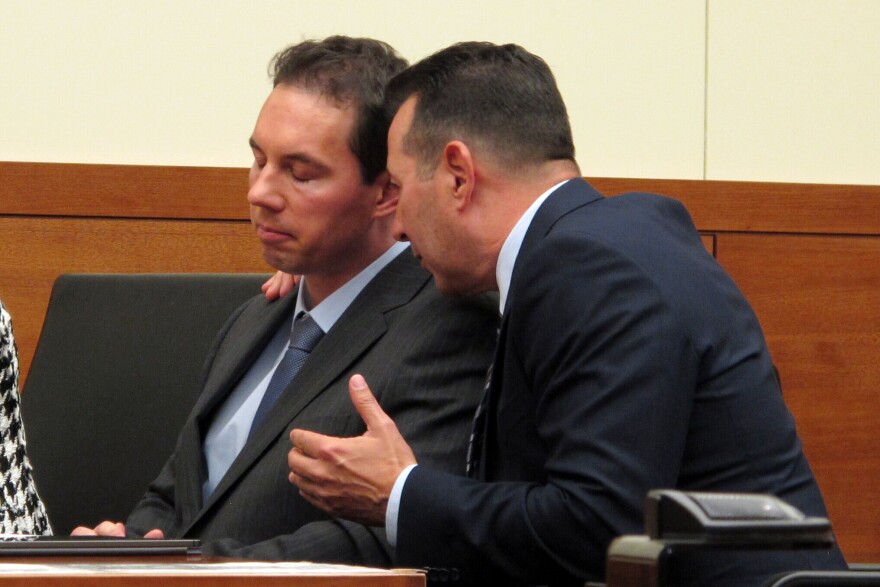Updated December 1st, 2021 at 12:34 PM.
Former Mount Carmel doctor William Husel is back in court Wednesday as his attorneys try to convince a Franklin County judge to dismiss one of the largest murder indictments in Ohio history.
The crux of Husel’s legal challenge is based on the assertion that former Franklin County prosecutor Ron O'Brien intentionally kept evidence from a grand jury as he pushed them to indict Husel for ordering what O’Brien called unjustifiable doses of the painkiller fentanyl.
In all of the 25 deaths for which Husel was indicted, he ordered nurses to administer doses of fentanyl between 500 and 2,000 micrograms. But , Husel’s attorney Jose Baez pointed to another patient who received 2,500 micrograms of the painkiller and lived for another 10 days.
That death was not part of the case brought by prosecutors.
"They lied, and they knew based off the science and the medical file that they had in their possession of Tracie Young who received 2,500 micrograms of fentanyl within 38 minutes after being taken off of her breathing tube, who lived for 10 days," said Husel's attorney Jamie Lapidus.
In earlier reporting, �ǿ�����ý identified the patient as Tracie Young, 46, of Grove City. Young had a cardiac arrhythmia in late November of 2014, and by the time the ambulance reached her 20 minutes later, she had no brain activity. She was taken to Mount Carmel West, where she was put on a ventilator in the intensive care unit.
"She was still showing symptoms of pain all the time, no matter what they gave her," Tracie Young's sister, Kris Young told �ǿ�����ý. "She would grimace, and moan, and squirm."
Kris Young is a retired nurse and said her sister had a high tolerance to pain medications because she was put on opioids after a bad back surgery years prior.
She said her sister wouldn't have wanted to live on a ventilator, so Tracie Young was extubated and given 2,500 micrograms of fentanyl to make her comfortable. But she did not immediately die after the dose – instead, she was transferred to the palliative care unit.
“I do remember in palliative care one nurse telling me she had been there close to 20 years, and that she’d only known one other patient beside my sister that was able to have the pain medication and still show signs and symptoms of being in pain.”
Tracie Young died 10 days after recieving the dose, on December 3, 2014. Her sister Kris Young said the family was never notified of her sister’s involvement in William Husel’s case by law enforcement or the hospital.
Prosecuting attorney David Zeyen said they didn't charge Husel with Young's death because the dose didn't
kill her due to her high tolerance.
"Tracie Young had a very, very high tolerance to opioid pain medication because of her years of taking such medications under the care of a doctor to alleviate pain from her a failed back surgery," said Zeyen.
“I don’t question the amount, honestly,” Kris Young said of the pain medication her sister received. “We wanted her to be as comfortable as possible. We knew that she was going to pass away and I wanted her to die with dignity, without pain, comfortably.”
In the 2020 hearing, Husel’s attorney Jose Baez said the discovery of the Young case proved there has been “a monumental miscarriage of justice.” At the time of Husel's employment, the health system did not have any guidelines or a cap on pain medication during palliative ventilator withdrawals. Mount Carmel updated its guidelines in January 2019, after firing Husel.
Most hospitals don’t have a policy for palliative ventilator withdrawal because there is no agreed-upon maximum dose, experts say.
"There are no absolute limits to the doses of medication that we give," said Richard Leiter, a palliative care doctor at Dana Farber Cancer Institute and teacher at Harvard Medical School, at the time of the 2020 hearing.





